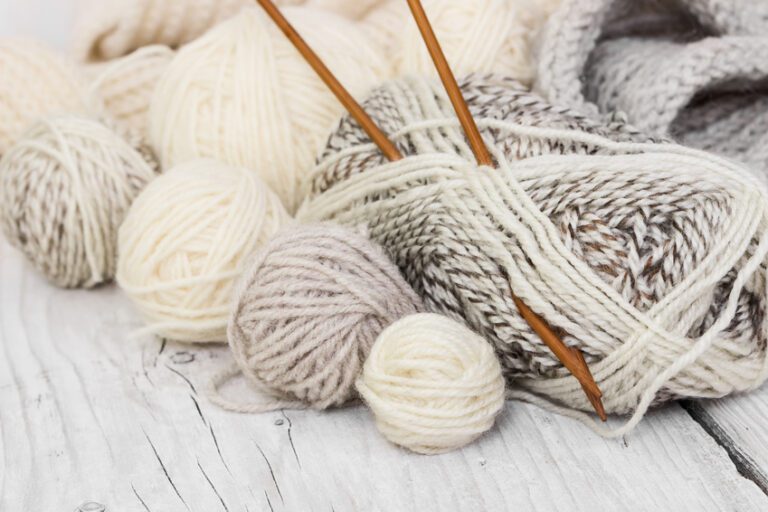Depending on the weather, we dress in different ways. Have you ever considered what are the materials and manufacturing processes used to create our garments? Fibers are the building blocks used to make fabric. All yarn is spun thread. Yarn is utilized to create fabrics on looms.
So, What Is Yarn?
Yarn is a type of “spun thread” used to weave fabrics. The simplest definition of yarn is a long thread used to create fabrics. Spinning is the method used to turn fibers into yarn. Fibers can be spun into yarn using a spinning wheel, spinning machines, or a hand spindle.


Some of the amazing characteristics of yarns are:
- Plasticity
- Elasticity
- Elongation
- Variations in yarn strength
Yarns come in three primary categories:
- Stapled: Spun yarns, commonly referred to as stapled yarns, are made from fibers that come in short, distinct lengths. Except for silk, all-natural fibers are stapled.
- Simple or Complex: Simple yarns are distinguished by their regular surface and constant length. Complex yarns are rough yarns that can contain curls, loops, twists, or even different coloured regions along with their length. They can also be thick and narrow.
- Plied, Single, or Cord: Two or more single yarns are twisted together to form plied yarn.
Which technique is used to turn yarn into fabric?
The flexible construction of natural or synthetic fibers or yarns is known as a textile fabric. It can be made using a variety of methods, but the most popular ones are weaving, knitting, bonding, felting, and tufting.


Weaving: Making fabric by arranging threads that pass in one direction with yarns at right angles to them is known as weaving. In order to weave, two sets of threads are used, with the vertical and horizontal yarns being moved alternately. A varied design can be created in the fabric by including coloured yarns and altering how these two sets of strands are weaved together.
Fabrics are made by weaving yarn on “looms”. The word for the loom in Hindi is “kargha.” The two types of looms are handlooms and power looms. A handloom is a loom that is operated manually. On the other hand, the loom that makes use of electricity is referred to as a “power loom.”
Three basic forms of weaving exist:
Plain Weave: The yarn is woven one over the other in this kind of weaving. This type of weaving is robust, long-lasting, and simple to sew. It is the most fundamental kind of weaving used to make fabrics for clothing and furniture.
Twill Weave: The yarn is passed over one or more other yarns in the same direction in this form of weaving.
It is a variety of parallel diagonal ribs. This type of weaving is robust, more aesthetically pleasing, and wrinkle-free.
Satin Weave: Warp and weft yarn are woven together to create a satin weave. Four or more fills are used in this form of weaving to produce smooth, glossy, and droppable fabrics.
The procedure of Weaving: Take two 10cm x 10cm square sheets of different coloured paper (blue and violet). Mark a 1cm border all the way around a different sheet (let’s say green). Mark the lines with a pencil at a distance of 1 cm, and then fold it in half. Unfold this paper after cutting along these lines, leaving a margin on all sides. Cut the remaining sheets into 10 1cm wide strips. Thanks to our partners, you can find online to suit every preference and budget, from budget to top-of-the-range super stylish models.
Pass them through alternate cuts to include them in the green one. A woven paper mat will be seen once all 10 strips have been woven.
Knitting : It is a method of making fabric that involves connecting or interlacing loops of a single skein of yarn. Knitting is a procedure that creates a variety of materials, including T-shirts, sweaters, jackets, and shawls.
The production of knitted fabrics is fairly simple and can be done using either yarn or any other fiber, such as cotton, nylon, wool, or polyester.
Both computerized and machine-based knitting techniques are used to create various types of knitwear.


In Brief: Yarn is a type of “spun thread” used to weave fabrics. Spinning is the method used to turn fibers into yarn. Fibers from a mass of cotton (or wool, or silk, etc.) are pulled out and twisted during the spinning process. Three tools, including hand spindles (Takli), spinning wheels (Charkha), and spinning machines, can be used to create yarn from fibers. Weaving and knitting are the two main methods used to create fabrics from “yarn.”
Devika Fibres manufactures Draw Textured Yarn, Air Textured Yarn and also supplies Polyester Yarn in India. Making fabric by arranging threads that pass in one direction with yarns at right angles to them is the process known as weaving. By using knitting needles or machines to interlock loops of single yarn, we can create cloth by knitting. Knitting can be done manually (with knitting needles) or mechanically.
